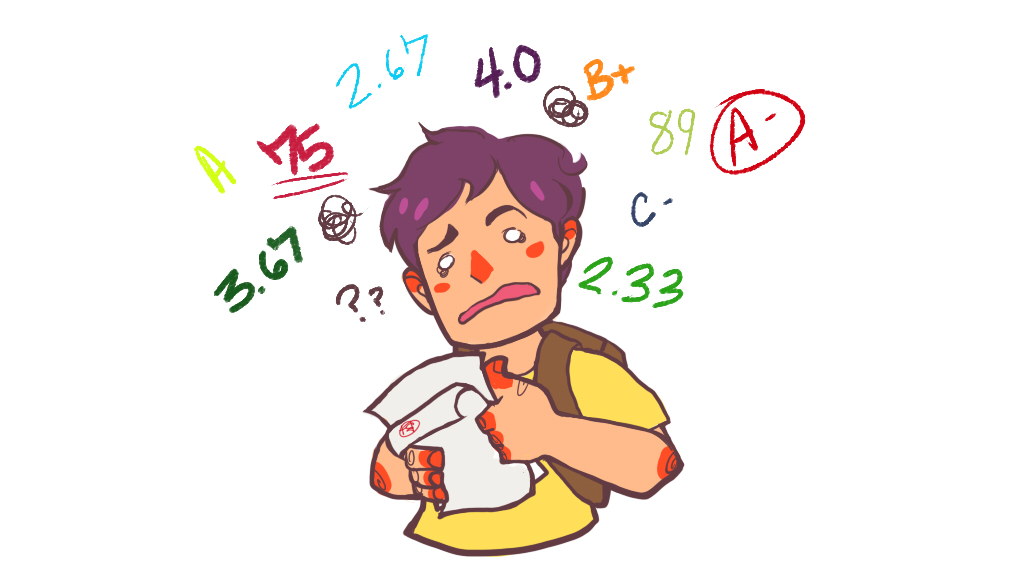Last year, RIT students saw a major change in their schedules with the introduction of the semester system, replacing the beloved quarter system. Originally, the semester conversion was supposed to roll out in tandem with a change in the way RIT grades its students, but the grading system was delayed a year. Well, that delay time is up and the new refined grading system is in place for this academic year.
Similar to the semester conversion, the implementation of the plus/minus grading system was met with a considerable amount of resistance from the student population, and understandably so. The plus/minus
The two pros are the addition of the B+ and C+ tiers. Grades that fall within the higher end of the ten-point range will now receive more quality points than under the old system, which will result in a higher GPA. For a student that consistently earns grades towards the higher end of a tier, this system is good news; however, not so much for students who consistently score towards the lower end of the range.
Michael Laver, Chair of the Academic Senate, shared an interesting tidbit of information regarding the enforcement of refined grading. "In essence, faculty have sovereignty over the grades that they they give, and administrators are not able to tell faculty how to grade," said Laver. So even though refined grading is now an institute policy, it is possible that students may take courses that still follow the legacy grading policy.
There are three cons, in the form of the A-, B-, and C- tiers. Previously, all grades in the A, B, or C category received the same number of quality points, regardless of where in the ten point range the grade fell. Now grades falling within the lower range will receive less quality points, which translate to a lower GPA.
There are certain circumstances in which students may feel the need to withdraw from a course that they are enrolled in.
In the unfortunate circumstance that a student fails a course or does not earn a high enough grade to advance to the next course in a sequence, D5.0 defines terms in which students are allowed to retake courses. Undergraduate students are allowed to repeat courses, and the grade they receive will be the final grade regardless if it is lower than their grade from the first attempt. According to Dr. Jeremy Haefner, RIT provost and senior vice president for academic affairs, D5.0 is silent on the number of times a course may be retaken – meaning it is permissible for a course to be retaken more than once. Additionally, Haefner stressed that repeated courses need to be taken at RIT.
Policy D5.0 concludes with guidelines on how students’ GPAs are calculated. According to the RIT Undergraduate Bulletin, “… candidates for an undergraduate degree … must have a program cumulative grade-point average of at least 2.0.” The policy includes a caveat in which certain colleges and programs may define stricter standards. D5.0 defines the requirements for graduate degree candidates at a minimum of 3.0. While some may disagree, I think that the academic standards set by RIT are reasonable to expect of students on both the graduate and undergraduate level. A 2.0, or C, is almost universally viewed as an average grade and thus it is fair to expect that undergraduate candidates at least meet that standard. A 3.0, or B, is generally viewed as above average in terms of academic performance. If students elect to further pursue an education at the masters or doctoral level, it should be expected that they demonstrate an above average command of their subject.
For better or for worse, grades are an inevitable part of the lives of students, providing a way to evaluate and express academic performance. Just like last year was our first on semesters, this will be the start of plus/minus grading at RIT. It will most likely be individual students' typical academic performance that dictates how they feel about the new system; regardless, it is here to stay. Understanding our grading system isn’t difficult, all it takes is a careful reading of the fine print.








